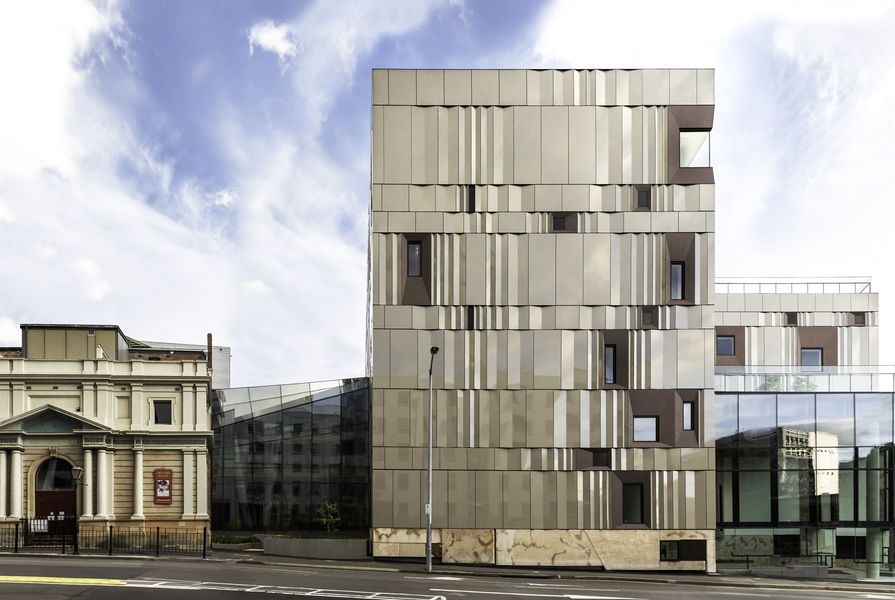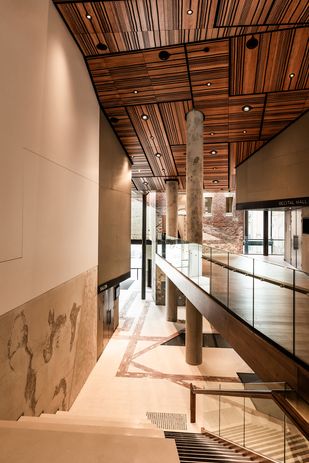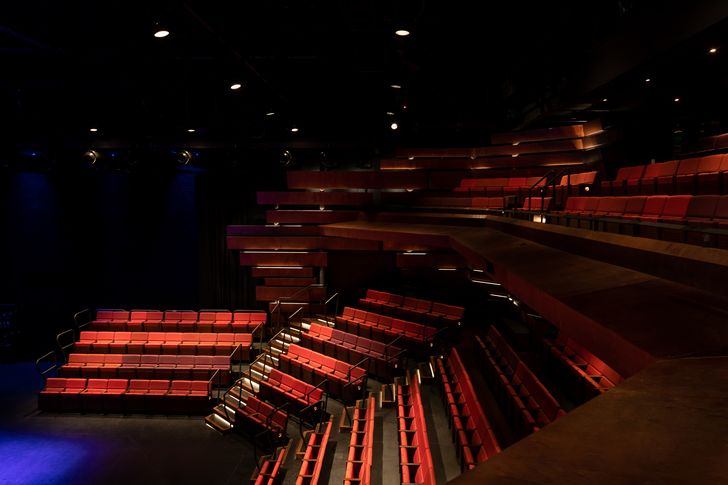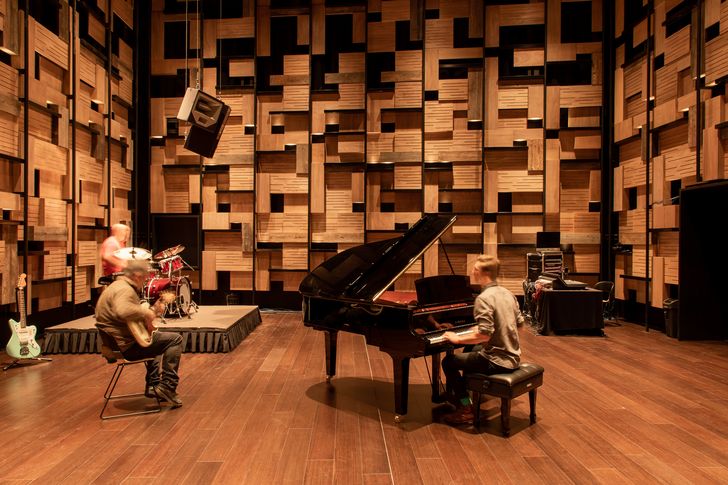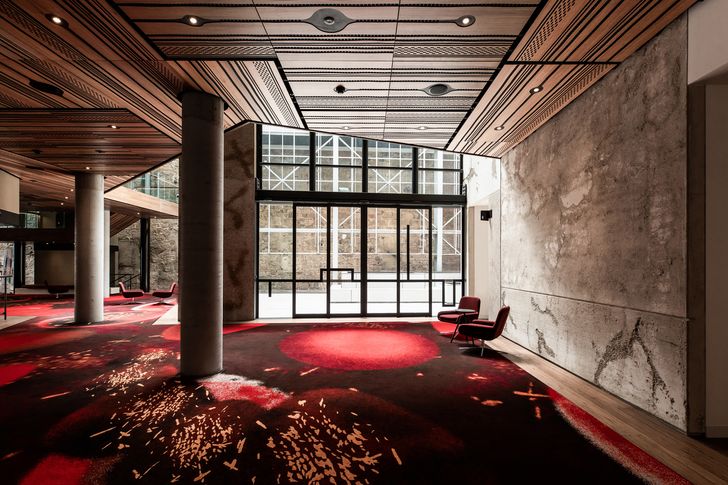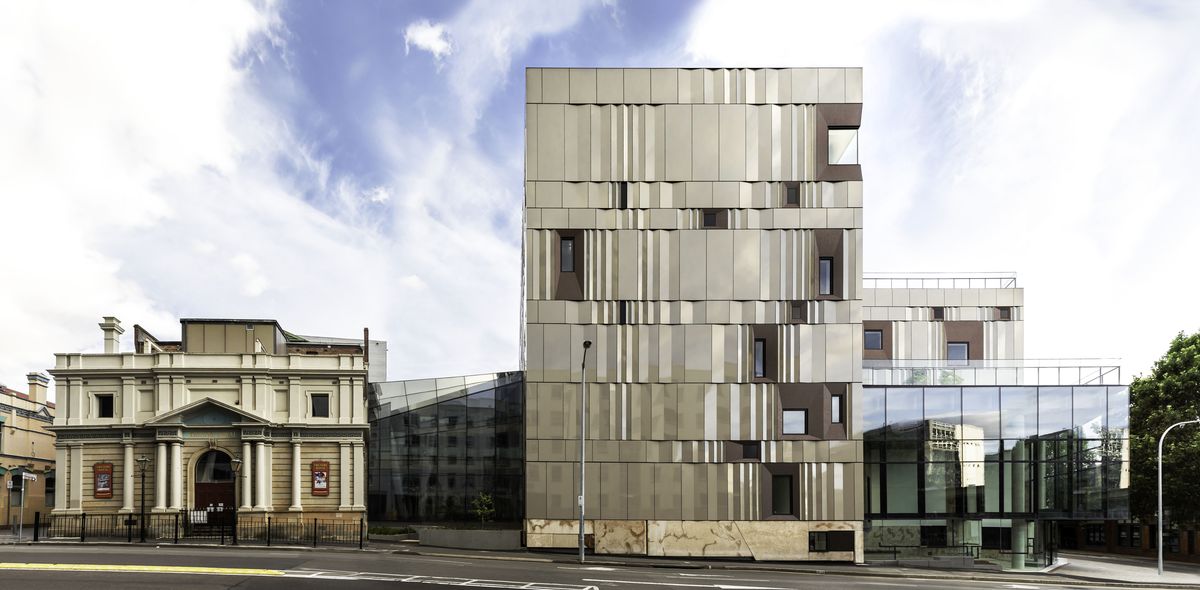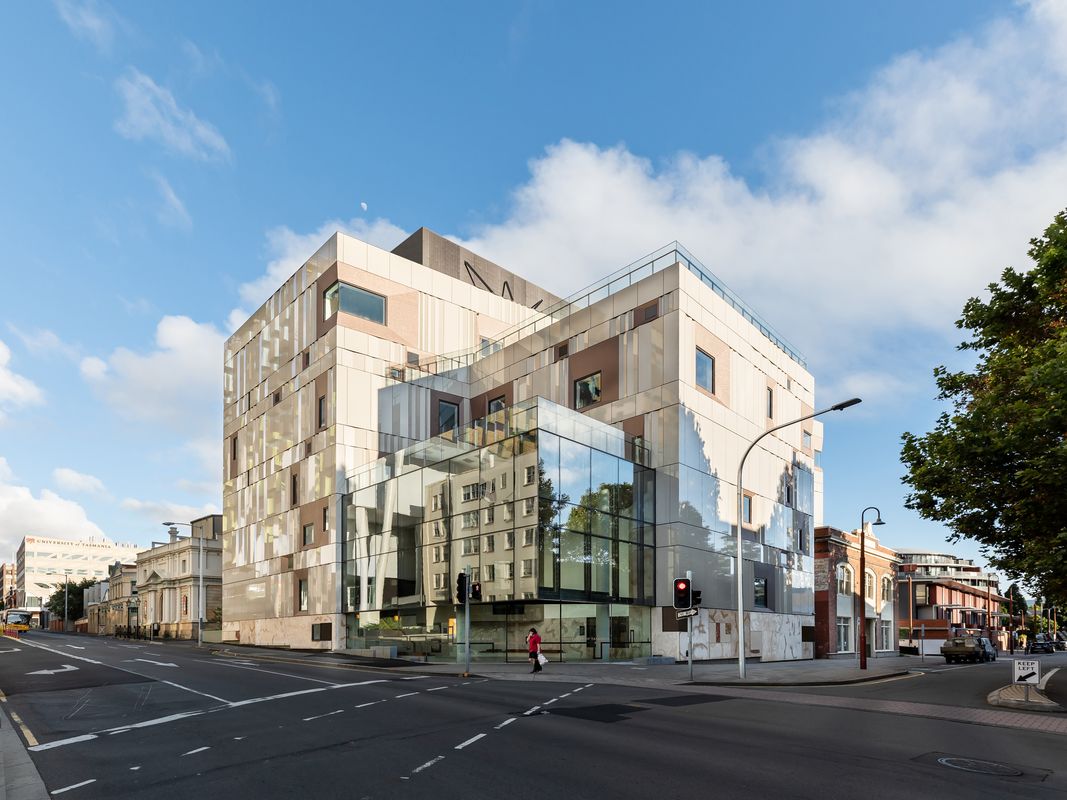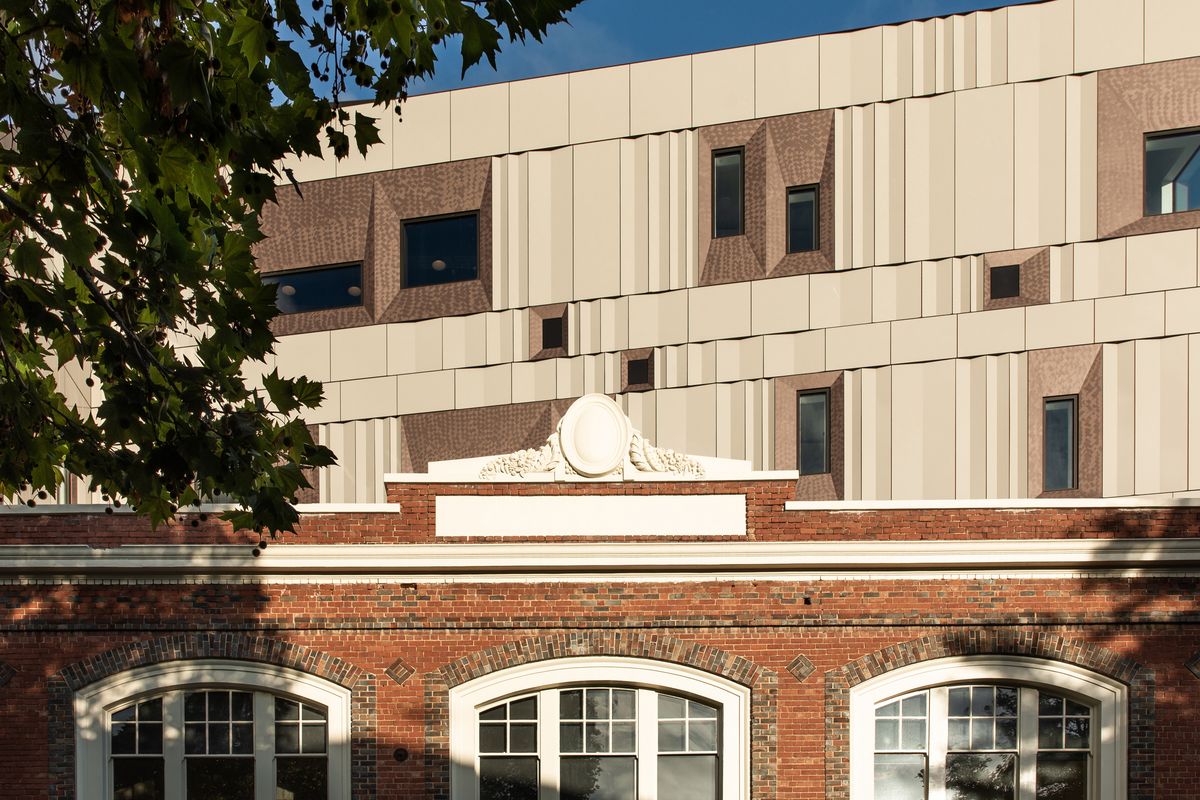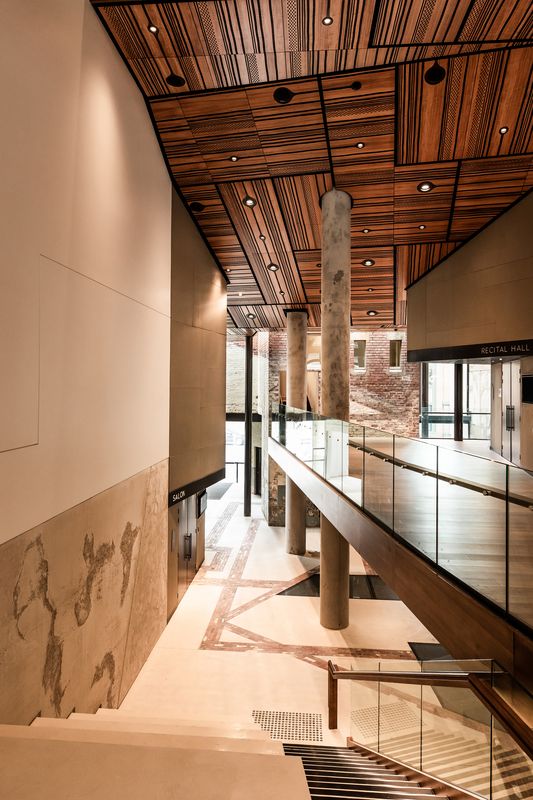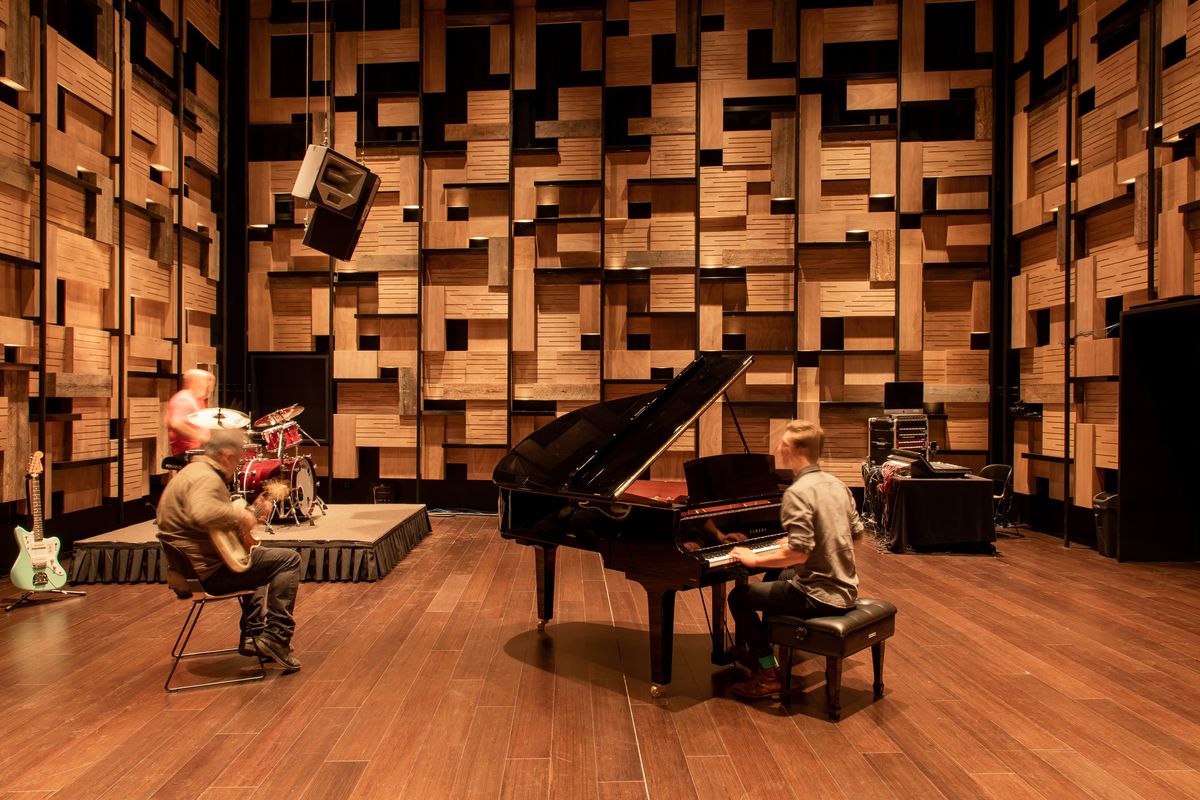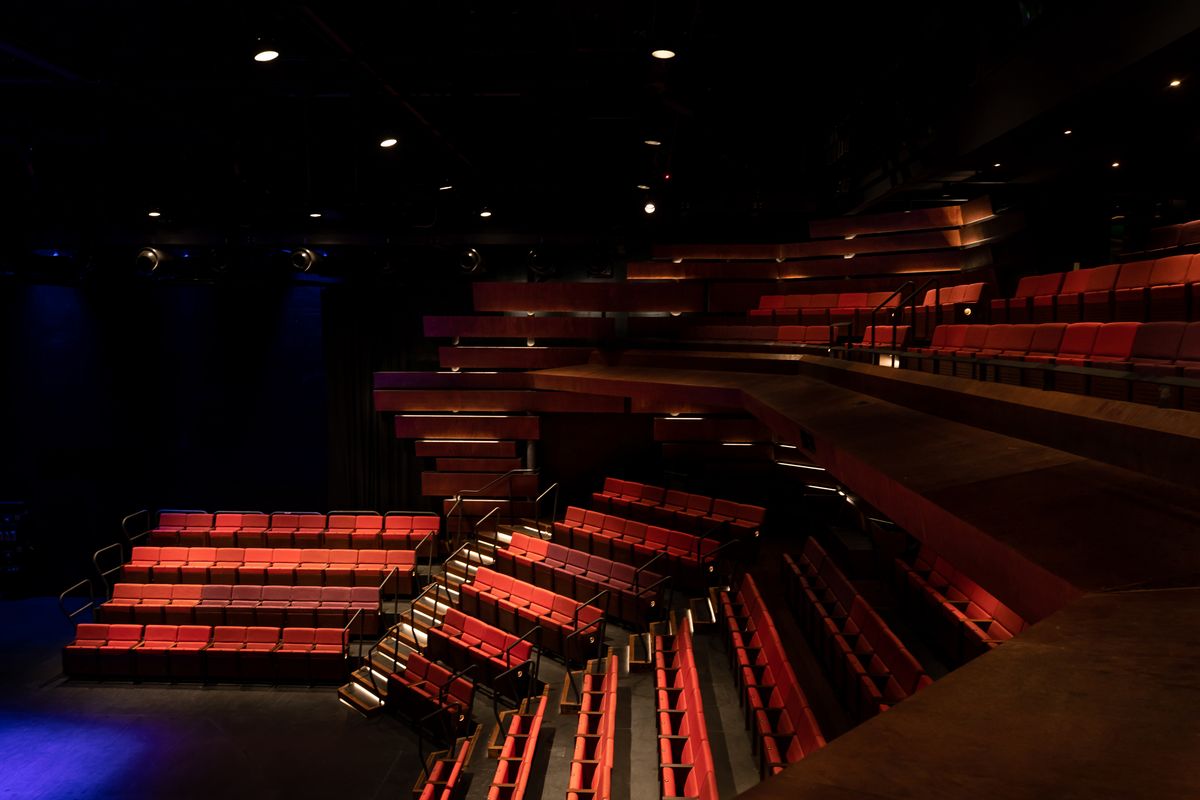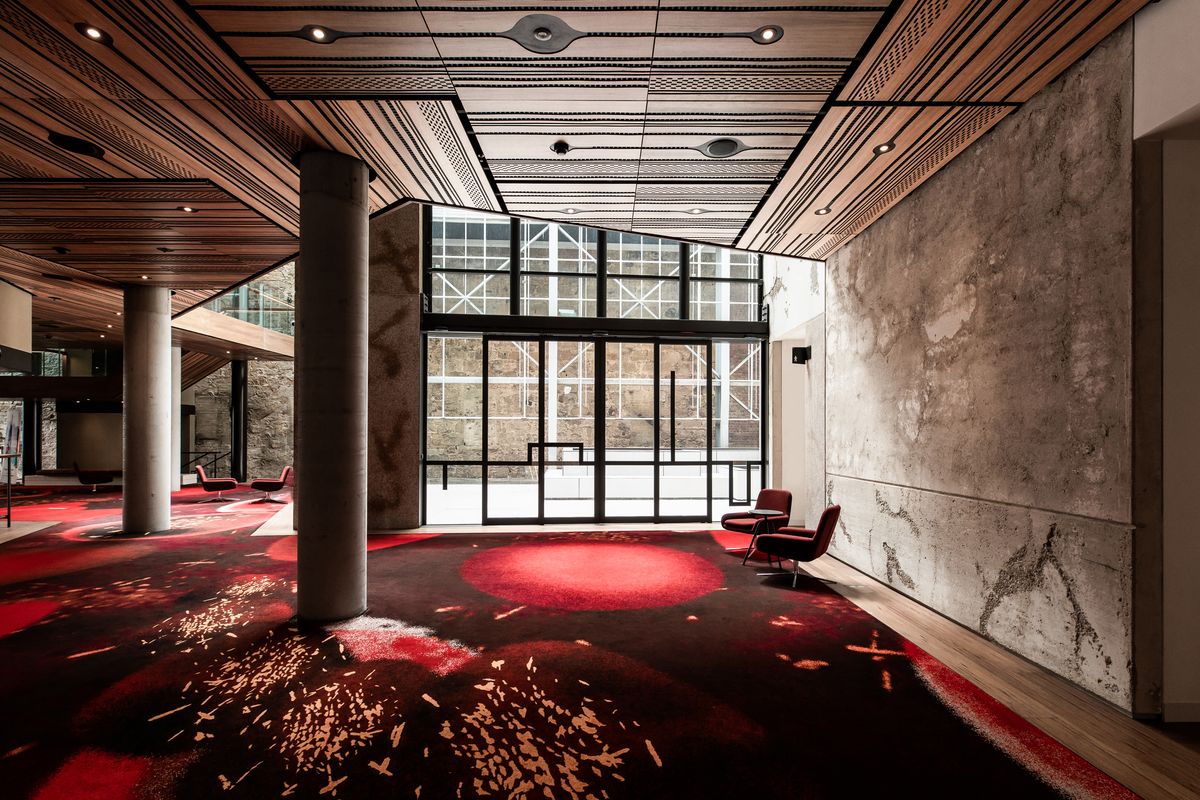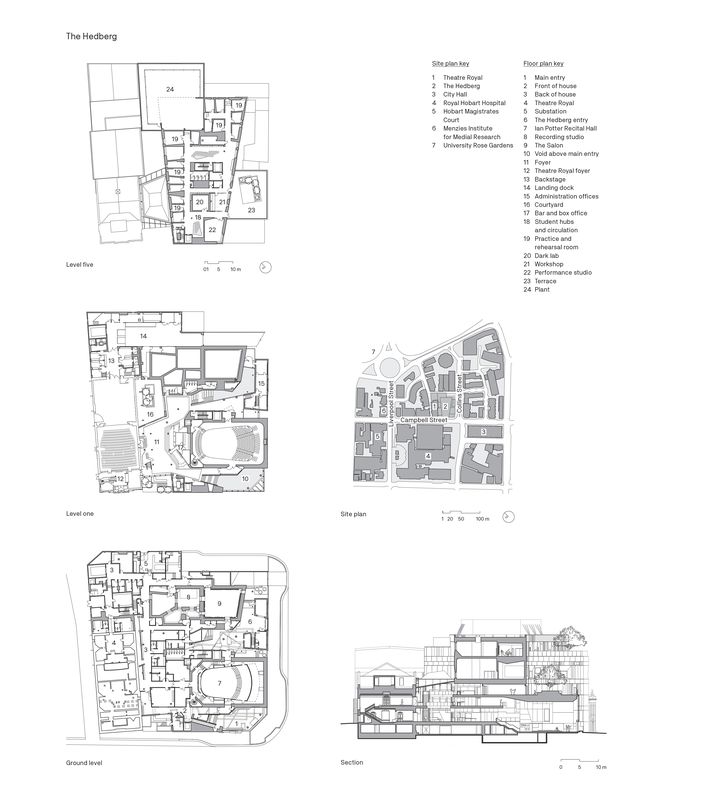Australia’s oldest continuously operating theatre, Hobart’s Theatre Royal has been a catalyst for Tasmania’s cultural life since the 1830s. Described by composer Noël Coward as “a dream of a theatre,” it was established via the philanthropic endeavours of a group of Hobart business leaders. Since its opening in 1837, the Theatre Royal has had a rich and colourful life, hosting a broad range of performances from music halls to cockfights. Saved from demolition several times as the city developed around it, the theatre underwent extensive refurbishment following a fire in 1984. The original splendour of the ornate and intimate auditorium was revived, the stage house, lighting and flying equipment were upgraded, and a new black-box Backspace Theatre was added. In the decades that followed, the theatres continued to be extensively used and well-loved, but the limited foyer and circulation spaces presented ongoing operational challenges.
With no room to extend within the existing site, the theatre board explored various options for partnerships that might allow expansion onto the neighbouring vacant site. Concerns about the compromise that might occur by accepting the least-worst option of a non-complementary use were weighed against the problems that might arise should an alternative contemporary performance space be built elsewhere, leading to two organizations competing for funding, energy, audience and entrepreneurial capacity. Theatre Royal CEO Tim Munro describes how the theatre board were keen to expand their vision in order to connect with a broader range of stakeholders and to ambitiously engage in developing a strong contemporary program, rather than merely focusing on managing an old building. To do this, they needed a partner who could provide access to both financial and cultural capital.
Liminal Architecture with WOHA’s design strategy was to balance the theatrics of the building’s purpose with sensitivity to its context.
Image: Natasha Mulhall
Recognizing that the University of Tasmania was looking to relocate its Conservatorium of Music, the theatre joined with the university in 2007 to approach the Tasmanian government for funding. The leadership and complementary civic and cultural vision of the university – in particular that of Provost David Rich and Vice Chancellor Daryl Le Grew, an architect – were catalysts of the project. Rich’s personal links to Tasmanian cultural organizations and the Le Grew-led urban strategy for new university facilities that would form a “string of pearls” within the city centre provided a strong conceptual context for the development of the project brief.
Jumping forward to 2020, the theatre and university’s shared ambitions have been realized in The Hedberg, an ambitious project designed by Hobart-based Liminal Architecture with WOHA. The project was funded jointly by the university, state and federal governments and private philanthropists, mirroring the collaborative foundations of the original Theatre Royal. Conceived as an “incubator for place-based creative practice,” The Hedberg addresses the Theatre Royal’s aspirations, both functionally and conceptually, and highlights the university’s important civic and cultural role. A generous sequence of foyer spaces and front-of-house facilities connects the old and new buildings, creating a suite of performance venues and rehearsal and recording spaces in a shared cultural complex.
A ceiling of Tasmanian blackwood veneer adds warmth to the multi-level foyer, where circulation paths intertwine.
Image: Natasha Mulhall
Supporting the university’s place-based agenda and addressing the rich heritage of site, the architecture consciously weaves layers of Tasmania’s cultural history into the new building’s form, spaces and surfaces. Physical fragments of the site’s past history have been embedded into the building or are displayed in curated showcases in the foyer. The complex takes its name from the Hedberg Brothers garage, which had occupied part of the site since the 1920s. Other spaces pay tribute to the project’s benefactors, weaving important cultural stories into the building. The expansive Claudio Alcorso Foyer, which provides a new space for socialization and interaction, honours the Italian-born entrepreneur who was a champion of the arts in Australia and an environmental crusader. The Vanessa Goodwin City Room, which opens onto a rooftop terrace with vistas across the harbour of Sullivans Cove, provides spaces for creative collaboration and small-scale corporate events and remembers the former Attorney-General of Tasmania and UTAS alumni.
Connecting Tasmania with broader Australian culture, The Ian Potter Recital Hall acknowledges one of the nation’s most generous cultural philanthropists. As a centrepiece of the new development, this 289-seat auditorium creates a specifically tuned sonic environment for a wide range of performances. Equipped with a variable acoustic system that produces a reverberation time of between 0.6 and 1.5 seconds, as well as live-streaming technology that provides the capacity to bring audiences into performances remotely, the Recital Hall is an intimate performance space that can also accommodate virtual events and collaborations.
The black-box Studio Theatre provides a flexible performance space for the Theatre Royal.
Image: Natasha Mulhall
At the heart of the complex, situated within the footprint of the former Hedberg garage, the 150-seat Salon is the key performance space in an extensive recording suite and is equipped with impressive technology and separate recording booths for performers: voice, percussion and orchestra. Slices of the trusses from the Hedberg garage are embedded into the acoustic lining of the Salon, revealing the cross-section and grain of the old timber. The Salon is both made from and constructed within the old garage.
Slices of the trusses from the original Hedberg garage are embedded into the acoustic lining of the Salon, the complex’s key performance space.
Image: Natasha Mulhall
The demolition of the Backspace Theatre has allowed for new back-of-house facilities, and the ageing performance space has been replaced with a 285-seat black-box Studio Theatre that creates a highly serviced flexible space for diverse performances. On the two upper floors of the new building, a collection of acoustically attenuated and flexible rehearsal spaces completely transforms the university’s Conservatorium facilities. A generous roof terrace provides an impressive outdoor social and performance space with an expansive view south toward Antarctica.
Historical and new cultural narratives are embedded in architectural form. The Hedberg garage facade provides an inner-city address for the university that directly engages with urban history. In contrast, a triple-height space on the southern corner creates a contemporary civic-scale public entry that offers visual permeability and enables universal access to the box office and multi-level foyer. Circulation paths within the foyer intertwine to allow flexibility of use and movement, while generous low-rake stairs double as performance spaces.
The architecture also evokes connections that stretch beyond the colonial heritage of Hobart and acknowledges the palawa and pakana people as Traditional Owners of lutruwita (Tasmania). Central to this is the story of the Dance of the Banksia Wicks, which tells of the practice of carrying fire from hearth to hearth by placing smouldering banksia wicks inside abalone shells wrapped in kelp. This narrative is literally and metaphorically woven into the carpet that winds through the multi-level foyer. Designed in collaboration by Liminal Spaces (part of Liminal Studio, along with Liminal Architecture) and Tasmanian Aboriginal textile and fashion designer Michelle Maynard, the palette of rich reds and browns with sparks of yellow evokes the communal flame that links people and place. It is a reminder that The Hedberg is built on the traditional home of the muwinina people of nipaluna and acknowledges the enduring and rich Aboriginal culture in Tasmania.
The carpet in the foyer, designed by Liminal Spaces and fashion designer Michelle Maynard, depicts the story of the Dance of the Banksia Wicks.
Image: Natasha Mulhall
Externally, the shimmering opalescent skin of the building recalls the protective abalone shell of the banksia wicks story and is also layered with theatrical references. The folds in the banded Vitracore wall panels are intensified around the windows, suggesting the opening of a stage curtain to reveal the warmth and activities within, and casting the people and spaces as performers within the cityscape. Window openings are expressed and enlarged by broad, sloping frame-like reveals that rescale the apertures, creating a variability that contrasts with the smaller-scale, intricately detailed and symmetrical facades of the Theatre Royal and the Hedberg garage.
The Hedberg is a landmark project within the university’s Southern Future strategy, which involves a shift from the Sandy Bay campus to the city. An incredibly aspirational project on many levels, it provides a benchmark for the university’s ongoing civic engagement. Central to the project is the selection of a highly skilled and committed design team, and a carefully negotiated briefing process. Built on a history of fruitful collaborations, The Hedberg demonstrates the capacity for shared cultural and community visions to create complex and rich connections to place – past, present and future.
Credits
- Project
- The Hedberg
- Architect
- Liminal Architecture
Vic, Australia
- Architect
- WOHA
Singapore
- Consultants
-
Acoustic and theatre consultant
Arup
Archaeologist Austral Tasmania
Builder Hansen Yuncken
Building surveyor and access consultant Pitt and Sherry Building Consultants
Engineer Arup, Gandy and Roberts Consulting Engineers, JMG Engineers & Planners
Graphic designer Liminal Graphics and Holly Webber
Heritage consultant Forward Consultancy
Landscape Inspiring Place
Planning Ireneinc Planning
Surveyor PDA Surveyors
Traffic engineer Howarth Fisher and Associates
Urban design Leigh Woolley
- Aboriginal Nation
- Built on the land of the muwinina people of nipaluna.
- Site Details
-
Location
Hobart,
Tas,
Australia
- Project Details
-
Status
Built
Category Education, Public / cultural
Type Theatres, Universities / colleges
Source
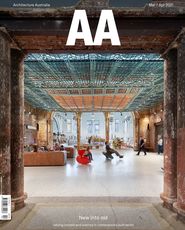
Project
Published online: 25 May 2021
Words:
Helen Norrie
Images:
Natasha Mulhall,
Supplied
Issue
Architecture Australia, March 2021

